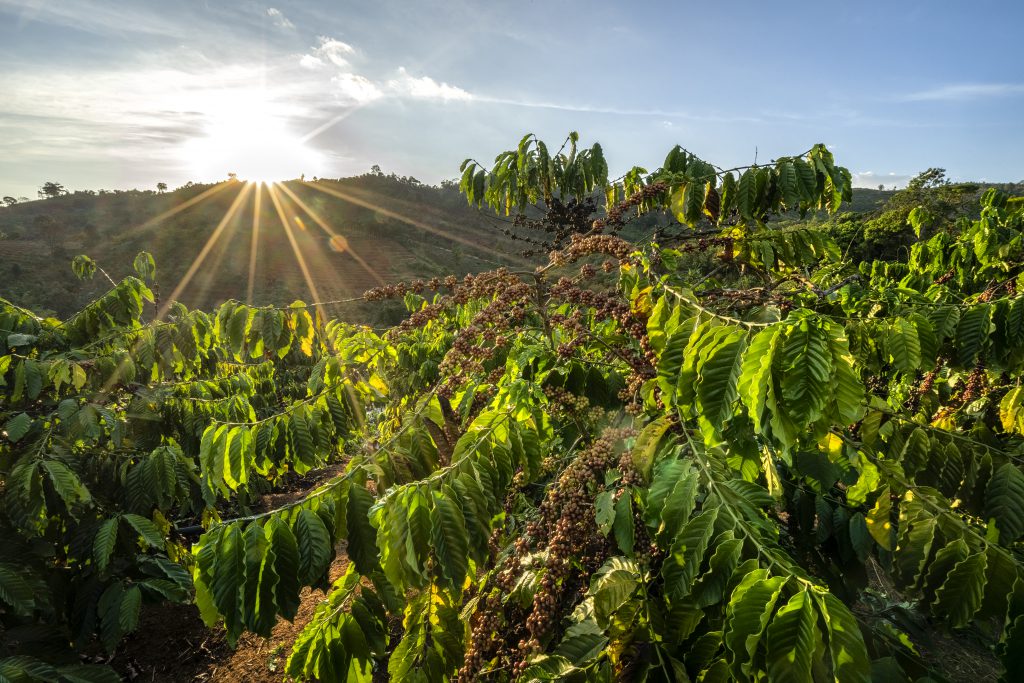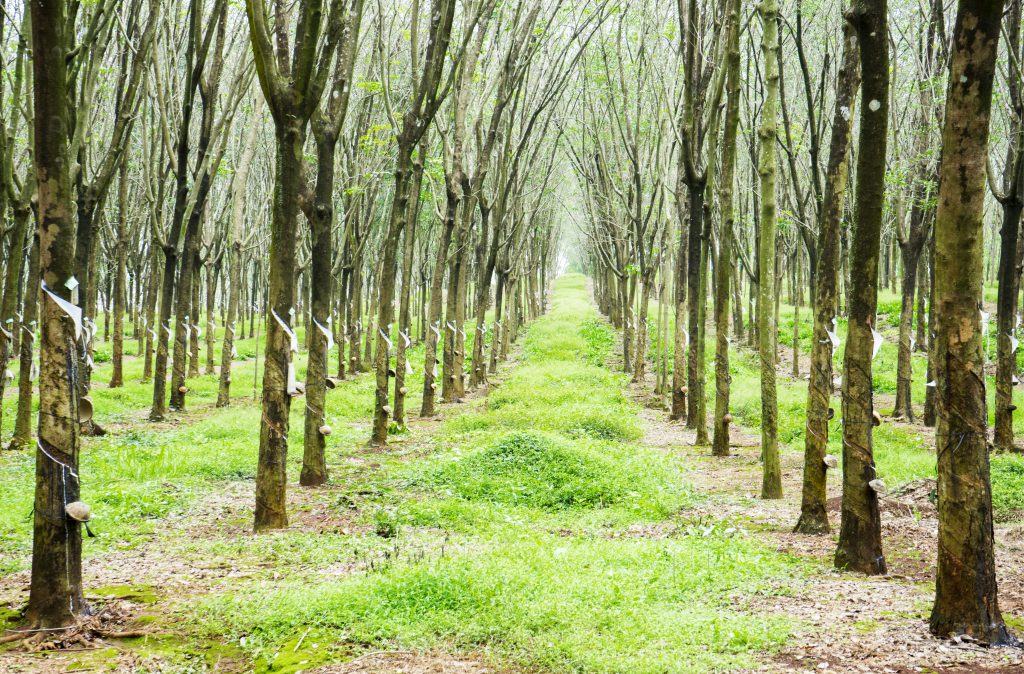Story: Assoc. Prof. Dr. Vu Hung Cuong
Photos: Tonkin
In the context of changing international circumstances and intense conflicts in various regions, Vietnam’s agriculture sector has experienced a fruitful year in 2024, despite the severe impacts of Typhoon Yagi, which struck Northern Vietnam in early September.

A year of storms and floods
Typhoon Yagi, regarded as the worst storm in the past 30 years, directly affected production and livelihoods in 26 provinces and cities in Vietnam’s Northern mountains and the Red River Delta. Many economic sectors suffered damages due to strong winds, flooding, and landslides, with agriculture, forestry, and fisheries being hit the hardest.
Reports from the Ministry of Agriculture and Rural Development (MARD) estimate total economic losses at approximately VND 81.8 trillion, with the agricultural sector accounting for around VND 30.8 trillion. Nearly 350,000 hectares of rice and crops were damaged, including 75,000 hectares of summer rice suffering losses of over 70%. Additionally, around 44,000 heads of livestock and approximately 5.8 million poultry perished; 36,000 hectares of aquaculture area and 11,100 fish cages were destroyed; and about 190,000 hectares of forest were impacted.
During a press conference announcing socio-economic data for the third quarter, Mr. Dau Ngoc Hung, Head of the Department of Agricultural Statistics (General Statistics Office), noted that the agricultural sector’s losses “only account for production results in agriculture, forestry, and fisheries regarding output and products harvested during the affected period, excluding damages to housing, livestock pens, fish cages, boats, and unharvested crops”.
Typhoon Yagi severely impacted growth in agriculture, forestry, and fisheries in Vietnam’s Northern provinces and nationwide. The growth rate for this sector in the third quarter was only 2.58%, a decrease of 0.97% compared to projections and marking the lowest growth rate in three years. For the first nine months of 2024, agricultural growth was recorded at 3.2%, which was 0.25 percentage points lower than forecasted.

Immediately after the storm, MARD worked with local authorities to quickly implement recovery measures. The ministry deployed working groups of experts and agricultural extension officers to directly assist affected households in restoring production. These efforts helped stabilize the livelihoods of those impacted by the storm.
Fortunately, agricultural production in Vietnam’s Southern provinces and the Mekong Delta remained relatively stable. Notably, specific crops that are well-suited to the region’s soil conditions have contributed to overall growth while continuing to leverage strengths that create bright spots for agricultural production in 2024.
Highlights of 2024
According to the report from the Ministry of Agriculture and Rural Development (MARD), the total export turnover of agricultural, forestry, and fishery products in the first ten months of 2024 reached USD 51.74 billion, marking an increase of 20.2% compared to the same period in 2023. For the entire year, exports are projected to reach a record USD 62 billion.
Rice exports continue to affirm their status as a key export sector for Vietnam. Despite significant impacts from the global rice market, positive signals regarding export rates in the first ten months of 2024, domestic production capabilities, and demand from major importing markets indicate that rice exports will exceed 8 million tons, generating over USD 5 billion—a new record high.
The seafood sector also shows promising signs, with monthly exports surpassing USD 1 billion for the first time in 27 months (since June 2022), reaching USD 1.1 billion in October 2024—an increase of nearly 31% year-on-year. According to data from the Vietnam Association of Seafood Exporters and Producers (VASEP), total seafood export turnover for the first ten months stood at USD 8.33 billion, up 12% from last year. The United States, China, and Japan are the largest markets for Vietnamese seafood.

Another noteworthy highlight is fruit exports. Vietnamese fruits have been exported to many countries, with China being a major market for twelve types of fruits. Just two years after official exports began, Vietnamese durian is dominating the Chinese market. The export value of Vietnamese fruits to China is expected to reach nearly USD 5 billion in 2024.
In addition to boosting exports, many businesses are increasingly focusing on expanding their domestic market share. In the Mekong Delta region, some companies have actively tapped into the domestic market by introducing OCOP (One Commune One Product) products into modern retail distribution channels and weekend markets with attractive discount vouchers to stimulate consumption. Notably, as of now, 14,642 OCOP products from 8,086 entities have been certified with three or more stars, including 51 national five-star OCOP products, significantly enhancing production value and income for rural residents.
Regarding the “New Rural Development” program, despite facing many challenges caused by the impact of Typhoon Yagi, significant efforts from central agencies, localities, and citizens have resulted in commendable achievements in rural development nationwide. By December 2024, it is projected that 77.5% of communes will meet new rural standards, with approximately 78.7% expected to achieve these standards by December 31, 2024—an increase of 3.7% compared to the end of 2023. At the district level, a total of 297 districts have been recognized by the Prime Minister as meeting new rural development standards (an increase of 27 districts since the end of 2023), accounting for 46.1% of all districts nationwide; among them, 14 districts have been recognized as advanced new rural areas. Through these efforts in building new rural areas, many villages across Vietnam have transformed into “livable countryside” regions.
New context and prospects for 2025
Due to the aftermath of Typhoon Yagi, agricultural and fishery production in 26 Northern provinces and cities is unlikely to recover in 2025, as significant time is required to reinvest in irrigation systems, cultivation practices, and aquaculture. The responsibility for next year’s agricultural production, particularly for exports, will continue to rest largely on the Southern provinces.
Moreover, according to forecasts from the U.S. Department of Agriculture (USDA), global rice exports in 2025 are expected to increase due to strong demand from markets in Africa and Asia. Although India has lifted its restrictions on rice exports, this is not anticipated to significantly impact Vietnamese rice prices, as Indian rice primarily consists of lower-quality varieties aimed at the African market. In contrast, Vietnam focuses on producing fragrant and high-quality rice, thus maintaining a distinct market with its own pricing.

Despite a general downward trend in global rice prices, high-quality rice varieties continue to hold their ground. Following the successful entry of ST25 rice into the Japanese market and subsequently Japonica rice varieties, there are promising opportunities for renowned Vietnamese rice brands to penetrate demanding markets such as Japan, South Korea, the United States, and Europe.
For seafood exports, the re-election of former U.S. President Donald Trump could present a golden opportunity for increasing exports of shrimp and pangasius from Vietnam to the U.S., as the country may seek to reduce its dependency on China and look for alternative seafood suppliers. However, due to the unpredictability often associated with Trump’s policy decisions, Vietnamese businesses should be cautious in developing their export strategies for the U.S. market starting in 2025—especially as American consumers increasingly prioritize sustainability, environmental protection, and social responsibility. Adhering to clean farming standards such as GlobalGAP, ASC, and MSC will be crucial for accessing these markets.
A concerning trend for Vietnamese pangasius is that it has shifted from being an exclusive product to facing fierce competition from several countries, including India, China, Bangladesh, and Indonesia. Notably, some markets like Thailand import Vietnamese pangasius for processing before re-exporting it into direct competition with Vietnamese producers.
Historically viewed as a lenient market, China has begun enforcing strict quality control measures and food safety regulations. This shift requires farmers and businesses to standardize their farming processes and comply with export regulations, especially traceability codes for growing areas, to mitigate risks.
To maintain the competitiveness of Vietnamese agricultural products in international markets, it is crucial to prioritize product quality while advancing preprocessing technology, storage solutions, and packaging methods. Enhancing technological applications to improve quality and diversify offerings is equally important. The adoption of digital technologies and consistent quality control through improved connectivity has become essential for facilitating agricultural sales—factors that farmers once overlooked but are now vital for success.










